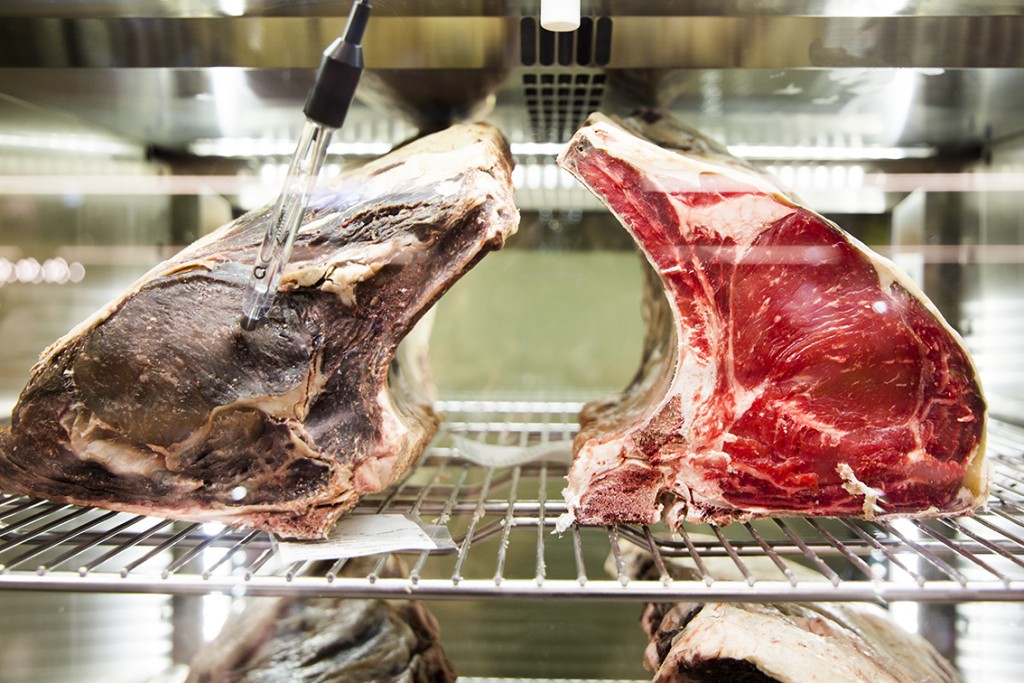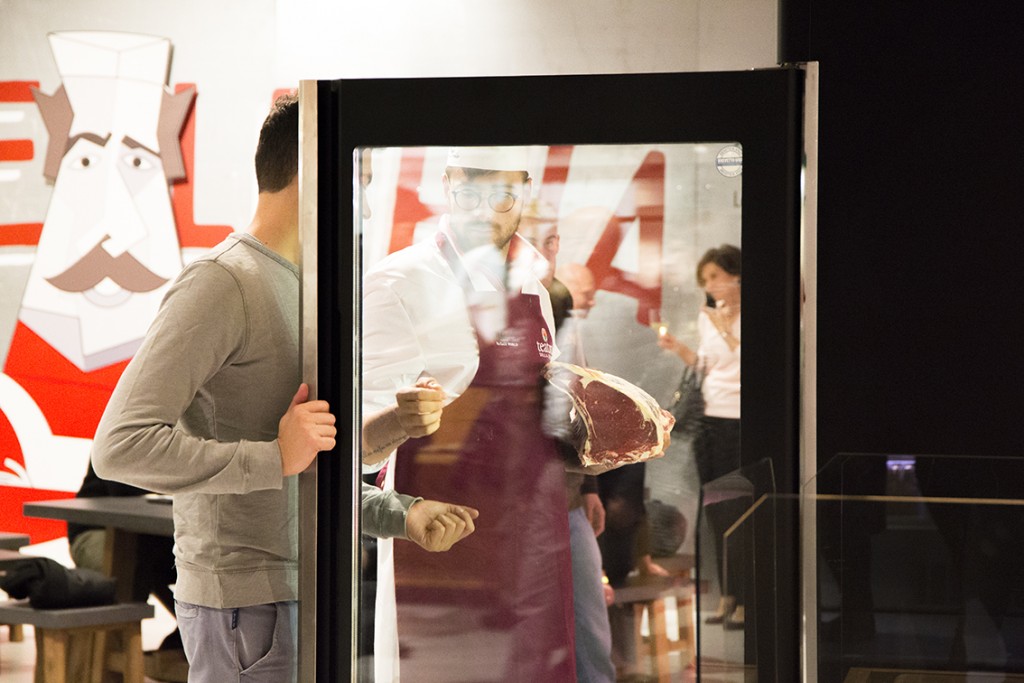DRY AGING
The mature meat, or dry aging, is a particular process that makes meat more tender and tasty. When animals have been slaughtered, meat isn’t ready to be eaten, in fact muscles tighten up and get hard. It takes time to make meat edible. In this period animal’s muscles face a natural physical and chemical process that gradually turns them into meat; high acidity and meat micro-organisms enzymes action denature proteins and increase tenderness, taste and flavor.
The mature meat depends on humidity, ventilation and dimension of cut (someone prefers the half carcass, others the quarter or the single cut).
Techniques can be divided into two categories: dry aging or humid aging. The last one doesn’t find many followers in USA and requires a beef cut dry aged vacuum packed. The drawback of this technique is to be the unpleasant smell that meat absorbs from blood deposited in the package.
The best technique is dry aging, hanging the whole carcass or the rack in the refrigerated cell, keeping controlled humidity and temperature, that must never exceed 4 °C.
It differs from the Anglo-Saxon dry aging school that uses seasoning cells with UV, to obviate the risk of increased bacterial contamination, and uses procedures that work with continuous air circulation that dries meat externally and protects it internally.
We also use seasoning cells exclusively for racks, with temperature and humidity air controlled by a computer which allows the meat to create a protective crust and maintains moisturized the internal part. A second probe controls the PH to avoid the meat degeneration risk. . Racks can be flavored with mountain hay, available in all Eataly stores.
The other dry aging procedure that we are tasting is with very high humidity and lower temperature that must be constant between 0 and 1 °C.“We must maintain good bacteria to have best quality maturation: everyone needs bacteria as a friend, because they will save use! This procedure gives a meat a maturity similar to raw ham, with its characteristics aroma. It’s important to season meat on the bone with the presence of oxygen, because it avoids meat bacteria contamination” Capaldo says. “I don’t like to mature meat hanging the whole carcass, because, according to me, it shouldn’t be disturbed, like it happens every time you open the cell to introduce a new arrival.” In summary our quality is obtain by these points: Piedmontese cattle, bred in the best way, hygiene and monitoring of cells temperature.





